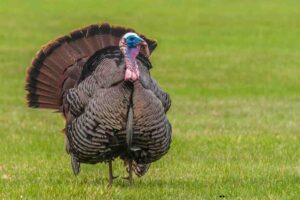Hummingbirds are among nature’s most delightful creatures, and attracting them to your yard can be an immensely rewarding experience. In Florida, with its warm climate and abundance of flowering plants, creating a hummingbird-friendly space is easier than you might think. This guide will cover everything you need to know about how to attract hummingbirds in Florida and turn your yard into a buzzing paradise.
How To Attract Hummingbirds

Hummingbirds are not only fascinating to watch but also play a crucial role in pollination. Their energetic flight patterns and vibrant colors bring life to any garden, and creating a haven for them contributes to local ecosystems.
How to Attract Hummingbirds to Your Yard

- Plant Native Flowers
Florida is home to various native plants that hummingbirds love. Flowers such as coral honeysuckle, firebush, and salvia provide the nectar hummingbirds crave. Plant a variety of these to ensure year-round blooms and a steady nectar supply. - Install Feeders
Wondering how to attract hummingbirds to a feeder? Opt for a red feeder, as hummingbirds are naturally drawn to this color. Fill it with a simple homemade nectar solution of four parts water to one part white sugar. Avoid food coloring or honey, as they can harm the birds. - Provide Water Sources
Hummingbirds enjoy bathing in shallow water. Consider adding a small fountain or misting system to your yard to create a refreshing oasis. - Create Perching Spots
Include shrubs or small trees in your yard where hummingbirds can rest between feedings. Perching areas help them conserve energy and provide a safe place to survey their territory. - Eliminate Pesticides
Pesticides can harm hummingbirds and the insects they eat. Maintaining a pesticide-free yard ensures a safe and healthy environment for these tiny visitors.
How to Attract Hummingbirds in Florida
The unique climate and flora of Florida make it an ideal state for attracting hummingbirds. Focus on planting heat-tolerant flowers such as bottlebrush and hibiscus. Providing shade and proper maintenance of feeders will keep hummingbirds visiting even during the hot summer months.
Explore more about info about birds: Raven vs Crow Size: Understanding the Differences
How to Attract Hummingbirds to Your Feeder
- Placement: Hang feeders in a shady spot near flowers to increase visibility.
- Cleanliness: Clean feeders regularly to prevent mold or harmful bacteria.
- Consistency: Keep feeders filled and fresh, especially during migration seasons.
How to Attract Hummingbirds in North Carolina

Although this article focuses on Florida, many of the same principles apply in other states, such as North Carolina. Adjust your plant selection to include flowers native to that region, and keep feeders stocked during migration periods.
Conclusion
Attracting hummingbirds to your yard is a delightful and eco-friendly endeavor. By planting native flowers, setting up feeders, and providing water and perching spots, you can enjoy the charm and beauty of these birds all year round. Florida’s warm climate offers the perfect setting for creating a hummingbird haven.
FAQs
How do I keep ants away from my hummingbird feeder?
Use an ant moat above the feeder or apply a thin layer of petroleum jelly to the feeder’s hanging pole.
Can I use store-bought nectar for my feeder?
While store-bought nectar is convenient, homemade nectar is a healthier and more affordable option.
When is the best time to attract hummingbirds in Florida?
Hummingbirds are most active in Florida from March to October, during their migration and breeding seasons.








